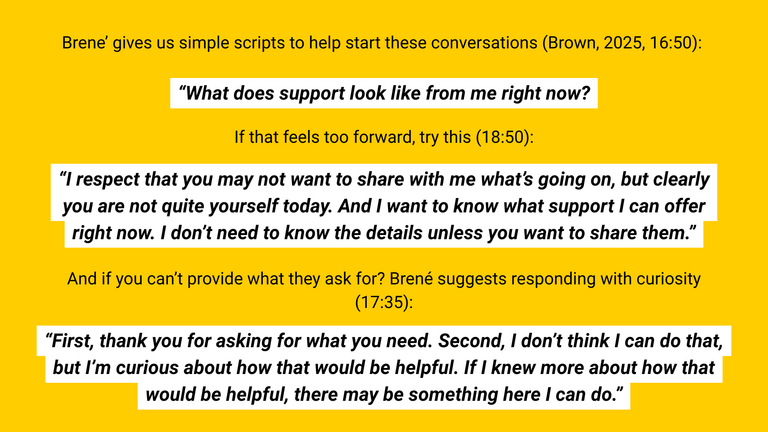In Part 1 of our Healthy Leadership blog series, we explored the “what” and “why” behind emerging healthy leadership frameworks. Now, let’s turn insight into action with practical ways to put one of these models—health-oriented leadership (HoL) into practice (Franke et al., 2014).
Healthy Self-Leadership Is the Foundation (SelfCare)
Self-care is contagious. When your educators and staff members see you engage in healthy practices like physical activity, making nutritious snack and lunch selections, taking breaks when needed, and engaging in positive self-talk, they are more likely to imitate your behaviors. Social learning theory, which emphasizes the power of role modeling and observational learning, suggests that health-conscious K-12 school administrators will naturally extend their personal health priorities to their school staff members by encouraging participation in health-promoting initiatives and practices.
Reflection Questions:
- Awareness: Am I aware of when I am feeling run down, stressed, or experiencing burnout? Do I understand what my mind, body, and spirit need to recharge and refocus and be the best version of myself?
- Value: What are my attitudes, perceptions, and priorities around health and well-being? How do I view the concepts of health and well-being in regard to individuals, groups, and communities?
- Actions: Do my habits demonstrate that I am self-aware and that I value health and well-being?
5 SelfCare Strategies
Here are 5 SelfCare behaviors that can inspire both your own and others’ health and well-being practices:
- Truly unplug from work during vacation or school breaks. Turn your “Out of Office” on and be explicit that you won’t be responding to emails. Upon your return, dish on you disconnected. Chronicle your grand ziplining and tubing tour through Belize’s Nohoch Che'en Caves Branch, snail hunting excursion with your toddler at the local park, Marie Condo house organization project, or staycation where you got your hands dirty planting a new vegetable garden. Sharing our own human experiences not only helps build rapport and trust but also shows your staff that you encourage deliberate breaks from work.
From multi-tasking to meaningful focus. Are you a proud multitasking extraordinaire? Me too. Well, unfortunately, for us, multi-tasking is a myth. You cannot truly perform at your best when your mind is jumping from task to task (APA, 2006). Instead, a healthy practice you can model is carving out time for deep, undisturbed work time to lock in on one task. This, in turn, optimizes your flow state. Block dedicated focus time on your calendar, tape a “keep out” sign on your door (inspired by my 8-year-old as she dreams up her latest Wicked performance), and turn off notifications from your phone and email.
**Extra credit: Coach your staff on evidence-based strategies for better organizing their work to avoid procrastination or poor time management, helping them avoid living in a constant state of putting out fires and reacting to hefty to-do lists.
- Move that body. Physical activity comes with cascading health and well-being benefits, including better focus, boosted mood, and more vigor. And it doesn’t require fancy equipment, sweat-soaking cardio, a lot of time, or a change of clothes (yes, you can move in business attire, too!). Any little bit of bodily movement is a boon to our well-being. For example, a recent study found that short, frequent 3-minute walking breaks or performing 10 bodyweight squats every 45 minutes helps lower blood sugar (Gao et al., 2024). Whether it’s using a sit-stand desk, fidgeting, walk-and-talk meetings, jumping in physical education class, or scheduling mini stretch breaks, the less sedentary you are, the more likely your staff members will also find creative ways to move throughout the school day. (Find movement-inducement strategies for classroom teachers here.)
- Be a walking billboard for health promotion. Most districts and schools offer some level of health promotion programming for employees, ranging from health education and mental health services to capacity- and skill-building training or one-off programs that focus on prevention, screening, or treatment. As a leader, trumpet the availability of these programs and encourage participation. Your direct support may make others more likely to take advantage.
- Be an influencer. Don’t worry, no TikTok following or supplement selling required to model healthy habits. (If that is your thing, though, then go for it!). Instead, think about small ways you can show that you embed health and well-being into your decisions and behaviors that would serve as a positive example for others. Discuss a eureka moment from your most recent therapy session, invest in your professional learning (and share key takeaways with your staff), map out your training schedule for your upcoming trail race, and most importantly, ask for help when you feel overstretched.
Healthy Leadership Shows Up in How You Care for Others’ Well-Being (StaffCare)
The other side of HoL is how your followers perceive your care for their individual and collective health and well-being—otherwise known as StaffCare.
Reflection Questions:
- Awareness: Am I aware of when my staff members are not acting like themselves? Do I notice when they are overwhelmed, fatigued, injured, or distracted?
- Value: Would my staff members agree that I value health and well-being in general, as well as their health and well-being, both collectively and individually?
- Actions: Do my behaviors as a leader positively influence those I lead to care for their health and well-being?
5 Ideas for Better StaffCare
Here are 5 ways to implement more HoL StaffCare in your leadership practice:
Pay attention to health signals. Notice when they aren’t quite themselves or when something is visibly wrong (sometimes physical, like wearing a brace, limping, fatigue, or seeming more upset or stressed than normal). When you see something isn’t quite right, check in with them. Don’t ignore these signals. My boss is particularly good at this. She has a knack for noticing when I am overwhelmed and will encourage me to take a break and go for a walk (my favorite head-clearing technique).
Even if this strategy doesn’t quite fit how you support your teachers or staff, don’t scroll away just yet! I pulled a few gems from a recent Dare to Lead podcast episode, “Brene and Adam Grant on the Skillsets of Empathy,” you can use in any setting:

Brene’ also reassures that leaders aren’t responsible for coming up with an answer—we are, however, responsible for noticing when something is off, showing genuine interest in providing support, and actively listening.
- Recalibrate your stress mindset. Many of us (looking at you, Gen Xers and Millennials) grew up with a “no pain, no gain” mentality. We were taught to tough it out, endure toxic bosses and coaches, and wear both physical and mental exhaustion as a badge of honor. However, it is time for us to rethink this mentality. While a baseline level of stress is productive, research indicates that leaders who view stress as harmful rather than helpful are usually more attuned to signs of others’ burnout and health struggles (Kaluza et al., 2021). This “stress-is-bad” mindset makes leaders more likely to step in and support well-being rather than piling on more demands.
- Yes, small talk is awkward. But do it anyway. You can’t recognize others’ health signals if you don’t have a relationship with them. The small talk that often feels trivial and forced, especially in the early stages of the relationship, is actually the foundation of connection. So, don’t just talk about work at the office or school in the classroom. Ask about the human things: their child’s play last night, their new knitting hobby, or the Hawkeyes’ big win last night. Check in on weekend plans or if they’ve tried the new salad shop up the road. These frequent informal conversations are essential, not only for cultivating trust but also as the primary way leaders demonstrate care for others. Additionally, consider your audience. These shorter, more casual interactions are especially effective early in the leader-employee relationship in terms of perceived StaffCare from a leader, while longer, more substantive conversations become increasingly important over time (Bruhn et al., 2025).
Leverage existing health and well-being frameworks as a lens. Health-oriented leaders look beyond outcomes. They see and support the whole human. Instead of focusing solely on test scores or teacher evaluations, consider reframing what “success” means through a well-being lens. What if, before chasing numbers, you centered the people who make those results possible?
One popular framework is the 8 Dimensions of Wellness (SAMHSA, 2016), which considers physical, emotional, social, spiritual, environmental, intellectual, occupational, and financial well-being. (Read this blog to learn more about how the 8 dimensions relate to educator wellness.) This framework is generally used to develop self-awareness around our own personal well-being. But, as a leader, you can also use it as a tool to be more responsive and caring, reflecting on each dimension and identifying areas where you can help restore and elevate your staff members’ sense of wholeness.
Emotional wellness, for example, can improve when leaders practice active listening, transparency, and availability (Guthridge, 2021); reduce unnecessary academic or job demands (Schaufeli & Bakker, 2004), offer resilience and optimism training (Youssef & Luthans, 2007), or weave mindfulness into routines (Stewert-Edwards et al., 2023).
- Small actions make a big difference. You don’t need to change the world all at once. Pick one small, human-centered action to start with. Encourage educators and staff members to take breaks. Celebrate when they model healthy habits, such as standing up during long meetings, setting clear boundaries, or engaging in prosocial behaviors like kindness, empathy, volunteering for a project or committee, or trying something new that challenges them. When leaders consistently recognize and support well-being behaviors, they normalize health-promoting work and learning cultures.
While each of us can make individual changes to become better “healthy leaders,” it is important to recognize that this style of leadership thrives in environments where well-being is a shared priority. It isn’t about doing more. Healthy leadership is about leading and thinking in a different way. Every small act of SelfCare or StaffCare strengthens the collective well-being of your educators, staff, students, and the entire school community.
References
American Psychological Association. (2006). Multitasking: Switching costs. https://www.apa.org/topics/research/multitasking
Brown, B. (Host). (2025, October 15). Brené and Adam Grant on the skillsets of empathy (Part 5 of 6) [Audio podcast episode]. In Dare to Lead with Brené Brown. Vox Media Podcast Network. https://open.spotify.com/episode/05T8tSyPoaPAnHLbnyodG3
Bruhn, K., Tautz, D. & Felfe, J. (2025). The role of leader-employee communication in Health-oriented Leadership. Gruppe. Interaktion. Organisation, 1-20. https://doi.org/10.1007/s11612-025-00822-3
Franke, F., Felfe, J., & Pundt, A. (2014). The impact of health-oriented leadership on follower health: Development and test of a new instrument measuring health-promoting leadership. German Journal of Research in Human Resource Management, 28(1-2), 139-161. https://doi.org/10.1177/239700221402800108
Gao, Y., Li, Q.-Y., Finni, T., & Pesola, A. J. (2024). Enhanced muscle activity during interrupted sitting improves glycemic control in overweight and obese men. Scandinavian Journal of Medicine & Science in Sports, 34(e14628). https://doi.org/10.1111/sms.14628
Guthridge, L. (2021, November 29). Why leaders, as well as team members, need psychological safety. Forbes. www.forbes.com/sites/forbescoachescouncil/2021/11/29/why-leaders-as-well-as-team-members-need-psychological-safety/?sh=58698c405b66
Kaluza, A. J., Weber, F., van Dick, R., & Junker, N. M. (2021). When and how health‐oriented leadership relates to employee well‐being—The role of expectations, self‐care, and LMX. Journal of Applied Social Psychology, 51(4), 404–424. https://doi.org/10.1111/jasp.12744
Schaufeli, W. B., & Bakker, A. B. (2004). Job demands, job resources, and their relationship with burnout and engagement: A multi-sample study. Journal of Organizational Behavior, 25, 293–315. https://doi.org/10.1002/job.248
Stuart-Edwards, A., MacDonald, A., & Ansari, M.A. (2023). Twenty years of research on mindfulness at work: A structured literature review. Journal of Business Research,169, 114285. https://doi.org/10.1016/j.jbusres.2023.114285
Substance Abuse and Mental Health Services Administration. (2016, April). Creating a healthier life: A step-by-step guide to wellness. https://store.samhsa.gov/sites/default/files/sma16-4958.pdf
Youssef, C.M. & Luthans, F. (2007). Positive organizational behavior in the workplace. Journal of Management, 33(5), 774-800. https://doi.org/10.1177/0149206307305562
